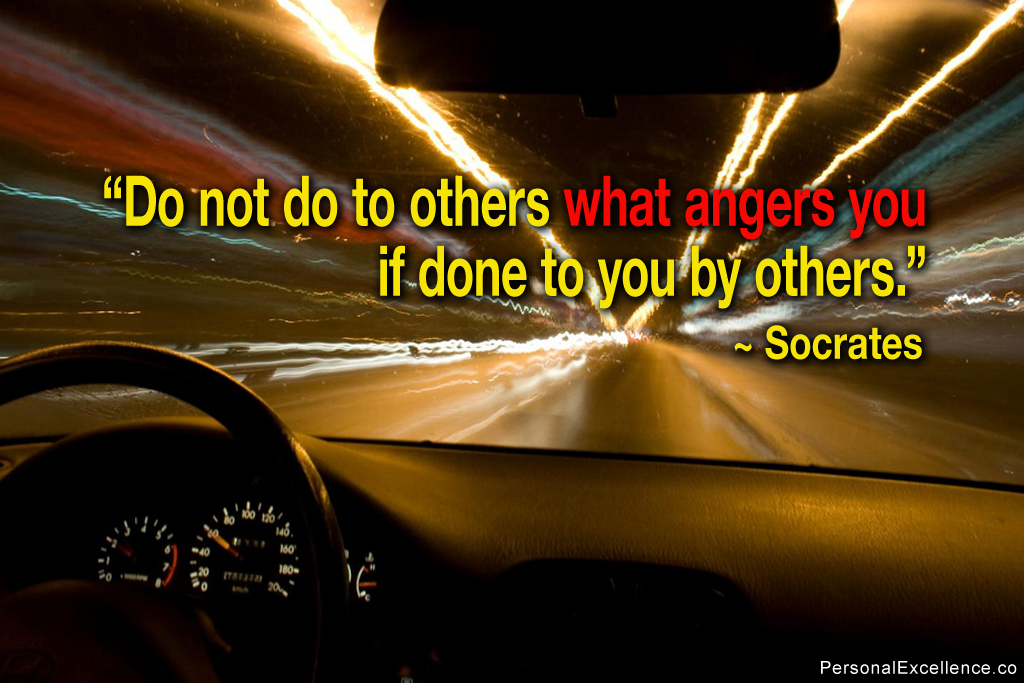
Have you ever had moments when you wished you spoke up and asserted yourself, but you didn’t? Do you feel difficulty asserting yourself sometimes?
I feel this way too sometimes. In this episode of The Personal Excellence Podcast, learn
- 5 tips to build your courage to be assertive without being aggressive
- Why being assertive doesn’t mean you stop being nice [02:21]
- Why being assertive is not the same as being aggressive [03:21]
- 2 key differences between being assertiveness and aggressiveness [4:08]
- The value of your voice [04:56]
- An incident where I got molested and didn’t assert myself, and why I should have [05:54]
- 3 questions to ask yourself in determining whether to assert yourself [10:49]
- An alternate approach for people who assert too much [11:38]
- Why you shouldn’t just “wait” when it comes to high-level career questions like promotion plan and salary rise [12:19]
- Dealing with a parent who keeps pushing their views on you [13:45]
- The face-saving culture and being sensitive to people’s feelings when asserting [15:39]
- What I do when I have disruptive course participants [16:42]
- Using I-statements vs. You-statements [18:20]
- 3 differences between I-statements and You-statements, and why I-statements are better when it comes to asserting yourself or in conflicts [19:36]
- Example of I-statements in a conflict with your partner [22:00]
- Focus on the positive in conversations [23:52]
- How to talk to your boss if you’re facing heavy workload [24:59]
- How to assert to a difficult co-worker [26:09]
- The importance of win-win and how to involve others [28:18]
Listen to the podcast via my online player, Apple Podcasts, Spotify, Google Podcasts, TuneIn, Amazon Music, or subscribe directly to my RSS feed.
If you've found The Personal Excellence Podcast useful, I'd really appreciate it if you can leave an honest rating and review on iTunes. Your review makes a difference and will help spread the message of conscious living to the world. Thank you!
How To Be Assertive, Not Aggressive [Transcript]
Welcome to The Personal Excellence Podcast. The show that’s all about helping you be your best self and live your best life. Now, your host, Celestine Chua!
Celestine Chua: Hey everyone, welcome to The Personal Excellence Podcast Episode 9, this is Celestine Chua from PersonalExcellence.co.
Today we have a question from reader Saim, who wants to know, how can you be more assertive and stay humble and polite at the same time? So let’s hear from him first.
Hi Celes, this is Saim from Pakistan. For the last 6 years, I’ve been working in Saudi Arabia in a multinational company. Some of my friends recommended me the Personal Excellence website and shared with me some free ebooks from PE. And then I logged on to the website, and I’ve been reading your articles, courses, so much stuff for the last 6 months. It’s really quite interesting and I really appreciate that. It has been helping me excel in my job.
The question I want to ask is, ‘How to be assertive?’ As a person, I’m humble and polite. But there are many situations in the workplace where we need to be assertive instead of being aggressive. I want to know and would appreciate if you can answer through the podcast in details on how to be assertive and techniques to do so.
Hey Saim, thank you so much for your question. Unfortunately, the question got cut off because there is an audio limit for the clips. The good thing is we got to hear your question: How can you be assertive while still remaining humble and polite at the same time?
So firstly, I just want to thank you for reading PE. And I want to thank your friends for recommending PE to you. Your support really means the world to me.
Now I want to make two quick points before I jump into the tips.
Fact #1: Being assertive doesn’t mean you stop being nice
The first thing is you mentioned that you’re humble and polite, which is a great thing. A lot of us are probably worried that when we try to be assertive, we stop being nice. For most of us here, we probably have core values of compassion, being nice to others, being sensitive, and being there for people. And maybe we feel that when we try to articulate our needs, we may come across as pushy. Maybe people don’t like that or they feel that we’re being arrogant.
It’s a common misconception. Being assertive doesn’t necessarily mean that you stop being humble, polite, or nice. It’s about how you assert yourself and I want to share some tips later on how we can be assertive and not come across as an ass.
Fact #2: Difference between assertiveness and aggressiveness
The second point is about assertive vs. aggressive. I love that you are asking how to be assertive without being aggressive. Because there is a distinction between assertiveness and aggressiveness.
When you are assertive, you are voicing your opinions and needs in a positive way while working with others to achieve a common goal. On the other hand, aggressiveness is when you make your point and force it across without consideration of other people’s opinions or feelings. Some people may even attack or ignore other peoples opinions, feelings, and needs altogether.
Here there are two big differences:
- Assertiveness is the articulation of your needs in a positive way, whereas aggressiveness is negative.
- Assertiveness is where you acknowledge that people have needs and you want to work with them to understand their needs and achieve this common goal. Whereas aggressiveness, you don’t really consider that people have their own opinions, boundaries, and needs. You don’t respect that either. You just want to push your point across.
In today’s podcast, I want to share several tips on how to be assertive without being aggressive. These tips apply to different contexts be it work or relationships, and it’s about tweaking them to fit your situation.
1) Recognize the value of your voice
My first tip is to recognize the value of your voice.
I find that a lot of us don’t speak up often because maybe we feel that we have to say isn’t important. Maybe people don’t care, or people don’t want to hear what we have to say, or what we’re gonna say isn’t going to make a difference or add any value.
But there is value in your voice, in your opinions, and what you like to share, and it is important to recognize that. No matter the problem you’re facing, if it’s bothering you, then people need to know. Because if you don’t voice it out, nobody’s ever going to know that and you’ll just be suffering in silence, which is not a good thing in the long run.
Example: When I got molested
An example where I didn’t assert myself would be years ago when I was traveling in the U.S., when I was molested. I shared about this at personalexcellence.co/blog/molestation/. There was this guy brazenly touching my thighs and it was in a train carriage where there were tons of people. Now it was at night and everyone was seated. So it wasn’t visible to other people except me.
When I experienced that, I was shocked obviously. How could someone be audaciously doing this in public and behaving as if it was okay? I tried to move away, doing all the indirect actions to convey rejection. But the guy persisted.
This was obviously the point when I should have called for help. But what stopped me included the fear of embarrassment, fear of people not believing me, not being able to get help, or even being accused of creating a ruckus or falsely accusing someone. And I was in a foreign setting, and not knowing what the locals are like, whether they would believe me, a foreigner.
So I stood up, got out of the carriage, and went to a different place on the train where I slept for the night safely and that guy didn’t follow me.
So at the very least, I protected myself. At that time, I was just in my mid-20s. Right after the incident when I blogged about it, I mentioned that if that situation were to repeat, I clearly in hindsight would report him or call for help and let it be known.
Now, let’s put this situation into context.
- On the whole, I got away safely. So that was no “damage” or harm done to me.
- I also avoided any public embarrassment because my approach was conflict-avoiding. And I think that is the underlying essence of many incidences when we don’t assert ourselves — it’s to avoid conflict.
But if we look at it in a different context, regarding the first tip to recognize the value of your voice — there is value in my voice. That was value in me asserting myself there and then.
By asserting myself, I would have called out that molester’s actions. There could well be criminals and molesters who perpetuate their crimes simply because they were never called out for what they did. They become more brazen in their crimes and offenses. And it just snowballs and becomes bigger.
So there is value in me asserting, in that it would have called out that person’s actions and driven awareness [of the offense]. Maybe the person would be let off, but at least it’s the first step towards ensuring that such issues don’t happen (again). In terms of sending a message to that molester and also sending a message out to the other people in the carriage. Maybe they see this issue being called out and they know that if this happens to them or they see this happening to others, how they should behave.
Example: Workplace
A different example, let’s say in a workplace context, where you are mistaken for something you didn’t do.
Let’s say you choose not to talk about it. And then over time, you start to become resentful. What’s going to happen when you feel resentful? The quality of your work may suffer, even if you don’t try to do that. Some of us may still give our best performance but this underlying resentment will naturally seep in and cause certain negative behaviors or passive-aggressive behaviors.
Example: Relationship
And then in a relationship setting. Let’s say you’re unhappy with your partner, but you don’t speak up about that. That naturally will cause unhappiness. Because if you are unhappy, that’s going to spill over to your partner and eventually him/her is going to be unhappy, and both of you wouldn’t be able to soar to your greatest heights.
The point is that when you don’t assert yourself and you just bottle things in, it drains your lifeforce and emotions, which affects your ability to be there for others.
I have some questions for you. If there’s a situation where you are fearful of asserting yourself, ask yourself:
- Will I be depriving another person or the group at large if I don’t share this input?
- Will I become resentful if I don’t air this thought?
- Will I be depriving myself of my needs by keeping quiet?
If your answer is yes to any of the above, there is value in asserting your voice and other people can gain something out of this.
Now there is the alternate situation where someone is constantly asserting themselves. Like someone who is very very confident and sure of themselves, constantly asserting themselves. Then, a different approach is necessary, where you need to weigh out the pros vs. cons of voicing out in every situation. I share more about this in my article, How to Choose Your Battles, that you can read at personalexcellence.co/blog/choose-your-battles/
2) Create the right context to speak
My second tip is to create the right context to speak.
Let’s say you want to talk to your boss about your promotion or salary negotiation. If you’re not assertive, probably you’ll just keep waiting and waiting, hoping your boss will bring it up one day. But it never comes up. Clearly, when you passively wait for the context to appear, it may not work in your favor.
Proactively create that context and make it happen. Arrange for a one-to-one meeting, like a 30-minute time with your boss. Arrange it at a time when people aren’t so busy so that your boss has the mindspace and time to hear what you have to say and help you in the best way possible.
Let’s say you are in a group setting. You’re at a presentation or in a group meeting and everyone is speaking. Have an opener to share your thoughts. For example: “Excuse me can I share my opinion on this?” or “Is it okay if I share what I think?” Doing this creates an opening for you and people know that you have something to share. You are also being polite by asking this question.
Example: How my client asserted herself to her mom
I have a recent client who shared with me about how her mom kept nagging about her relationship status. I’m sure those of you who are single and from Asia, you can relate to that. Where your parents start to ask you — when you reach at a certain age — when are you finding a girlfriend or boyfriend, when you’re getting married, blah blah blah and all that stuff.
So this happened to my client and she had been going through this for a long time where her mom just kept bringing this up once a month, twice a month. She felt really imposed and maybe even oppressed by this.
I asked my client, “Have you ever shared with your mom about how you feel?”
And she said, no she hasn’t. My client had never overtly mentioned to her mom about how oppressed she felt whenever she nagged her about her relationship status and told her to get married.
So here, applying this tip to create the right context to speak.
- One way is to simply mention it during a private conversation. When both of them are alone at home and they are not occupied with something.
- A second way could be the next time her mom talks about this topic, which she does every few weeks, this can be a great context to air her thoughts. Because at this point her mom would be in that zone of talking about this topic, asking her to get married, etc. So her mind is in this space. This would be the perfect time for my client to step in and share how she actually feels, and of course in a non-confrontational way.
Face Saving: Being sensitive to others when asserting
There are things that we should take note. For example, if there’s a negative or not-so-positive thing that I would like to share with someone, I would say it directly to the person rather than in a group setting.
A lot of this comes from the face-saving culture in Asia. Face saving is this concept when you do your best to preserve someone’s integrity. That means not causing embarrassment or making them feel shamed, where they would be “losing face.” It also includes situations where you call someone out on something that makes them look bad or you share negative feedback with them. I do all of these in private as much as possible, so one-to-one via email or in person as opposed to a group.
Example: How I deal with negative course participants
Sometimes in my courses — and this is really rare — but sometimes I have participants who are being strange or disruptive. Maybe they are giving a lot of strange comments or disrupting the flow of the course. Or perhaps making it difficult for other participants to concentrate or get the best value from the course.
I would not call them out in the open because this is not face-saving. The recipient may feel shamed or embarrassed; they may also feel shocked. It prevents them from being able to receive the message in the best way.
So what I do is, if there is such a situation happening, I would speak to that individual after the session to understand what’s going on. How is she or she feeling? Is there something troubling him/her? And so on. As opposed to openly calling out on the behavior in front of others because I don’t feel that that really solves anything.
This works well for me and it always achieves the best outcome. Because it allows me to better understand that individual on a personal level and to intervene and provide solutions on how this can be resolved.
So this is a win-win situation because:
- It doesn’t waste people’s time.
- It allows me to tend to the individual specifically.
- It also allows the individual to openly express him/herself without fear of judgment from others.
3) Use I-statements
My third tip is to use I-statements.
- I-statement refers to the speaker expressing his/her feelings and thoughts in a statement that starts with “I.”
- You-statement refers to statements that start with “You.” It focuses on the recipient, the person you are speaking to.
So, an example of a You-statement versus an I-statement. Let’s say someone is sharing feedback on a report.
- You-statement: “You wrote the report in such a confusing manner that is hard to understand it.”
- I-statement: “I found it hard to understand some parts of the report.”
Here’s a different example. Let’s say someone is sharing her thoughts with her partner.
- You-statement: “You have been neglecting me. You are spending too much time with your friends and your work.”
- I-statement: “I have been feeling neglected of late. I feel like we haven’t been spending much time together.”
Notice the difference between an I-statement versus a You-statement? Here there are three differences.
- An I-statement is where you own the statement and opinion. A You-statement can sound accusatory especially if what you’re talking about isn’t so positive.
- When you use an I-statement, you are sharing what you think and letting others decide what they want to do. As opposed to a You-statement where you impose your views on other people, such as, “You are doing this. You are doing that. You should do that.”
- The third difference is really subtle. When you use an I-statement, you acknowledge that the issue may lie with us. It’s not about being submissive or assuming blame. It’s about being humble and open-minded enough to recognize that sometimes the issue can be due to how we see things — as with many things in life I’m sure.
So when you use an I-statement, the receiver is less likely to feel attacked or intimidated. Both of you can focus on the problem at hand.
Exercise to monitor your communications
I have an exercise for you. For this week,
- Observe how you articulate yourself when you’re communicating with other people, be in e-mails or conversations.
- Do you tend to use You-statements or I-statements?
I want to stress that there’s no problem with You-statements. In fact, You-statements are great for building a personal connection or for positive praise and feedback.
But let’s say there’s a conflict or problem. I-statements are more helpful because you are owning this feedback versus attacking the other person.
Example: Argument with your partner
Here’s another example of a You-statements versus an I-statement. Let’s assume that it’s a couple in conflict.
- You-statement: “You are so selfish. You are always doing what you want without regard for my needs. Sometimes I wish you can stop making so many demands and start thinking about me for the first time.”
Notice how accusatory and attacking it seems, even though you may just be expressing your true unfiltered emotions? Using You-statement in a conflict can seem very attacking even though what you’re really trying to do is to assert your boundaries and needs.
On the other hand, using an I-statement where you focus on sharing your emotions and your thoughts — it can sound something like this:
- I-statement: “I feel that you have been ignoring my needs since you changed to your new job and I feel upset about this. I find very hard to manage things by myself and I really try my best. I love you and I want to be there for you. I hope we can spend some time to talk about this when you’re free and work out some possible solutions.”
Here the focus shifts from attacking and accusing to simply expressing your emotions which include neglect, being overloaded, overworked, possibly feeling unloved, also the desire to seek help.
So the next time you need to assert yourself, be it in a conflict or workplace setting, how can you use the I-statement as opposed to the You-statement? Starting your statements with “I,” focusing on expressing your thoughts without attacking someone else or pushing blame to another.
4) Focus on the positive
My fourth tip is to focus on the positive. The intent of this tip is similar to the feedback sandwich method that I share in my article on constructive criticism. You can read that at personalexcellence.co/blog/constructive-criticism/
You want to focus on the positive aspects of the situation while asserting yourself, as opposed to asserting in a negative way.
When you focus on the positive, it opens the conversation on a good note. It’s the same with I-statements. It’s to let the other person know that you are on their side and you’re not trying to attack them. Versus aggressiveness, one of the key differences with assertiveness is that with aggressiveness, you are just making yourself heard at all costs and you don’t necessarily care about that person. You may even end up attacking that person while making yourself heard.
Example: Being overloaded at work
Let’s say you are going through some heavy workload issues with very tight deadlines.
As opposed to talking your boss and saying things like “You’re giving me too much work” or “You’re not being reasonable,” we want to use the I-statement and articulate our views in a positive manner. An example could be:
“I’m really enjoying the work. I’ve been learning so much and I’m really grateful for the opportunities.
However, I’ve been having difficulty managing some of the tasks given the tight turnaround time. I was wondering if you could advise me on the priority areas in my workplan so I can work on them with priority. I’m really committed to giving my best at work. I appreciate any help and advice you can give and I look forward to your response.”
Notice that you’re not trying to sugarcoat. You are being honest. You are outlining the problem and being clear on the help you need.
Example: Difficult co-worker
Let’s take a look at a different example. Say you’re dealing with a co-worker who is not sending you stuff on time. Have you guys dealt with such people before?
A You-statement can sound like this:
- You-Statement: “You haven’t given me the report that I asked for. This is not the first time. You are always sending in stuff late and it’s disruptive for everyone. When can you send this to me?”
Notice here? It focuses on the negative, on the past track record of what the person did wrongly, and also frustration. Here’s how an I-statement that focuses on the positive can look:
- I-Statement: “I haven’t received the report for project ABC. Are you facing any trouble doing it? Is there any area that I can help you in? Let me know. We are here to support you. We do need to submit this by tomorrow latest. So let me know if there’s anything that we need to do to meet the deadline.”
Here, the difference is that you’re focusing on the positive parts. The things that can be done. That you are here to help. Rather than harping on the past, putting blame, or rebuking the person, which doesn’t really help the situation and may turn it into a defensive, accusatory, and angst-filled exchange.
Think about the exchanges that you have had with others and also moving forward as you talk to others. Think about how you can apply this and focus on the positive aspects. The positive things in this situation, the solutions, as opposed to focusing on the spilt milk, the irreversible things, or even fingerpointing and the faults of the person — which don’t really solve anything in the long run.
5) Understand and resolve
My last tip is to understand and resolve.
This is where the second big difference between assertiveness and aggressiveness comes in. If you remember, being assertive is where you voice your opinions and needs in a positive way and you work with the person to achieve a common goal. On the other hand, aggressiveness is when you’re bulldozing, making your point across without consideration of others’ opinions or needs or even attacking other people’s opinions and needs.
In this tip, you want to work with the other party to achieve this ideal outcome. To listen to what the other person feels, to work with them hand-in-hand to achieve a win-win as opposed to just saying, “I have this problem, go fix it” or “I have this problem. You are the reason why I have this problem.”
Let’s say you are team leader in a project. Actively involve your teammates by asking them for their opinions, getting feedback at regular intervals, listening to their viewpoints, and working with them to incorporate the key feedback into what you’re doing.
Let’s say it’s with a partner. You want to be listening to his/her point of view. Here you’ve already shared what you feel and that is your one-sided interpretation and viewpoint (which is important). After making yourself heard, you want to hear what he/she has to say, to understand things from his/her perspective and then you can work from there.
Or let’s say it’s with a friend. Maybe you have an issue with him/her. Maybe you feel that there are times when he/she isn’t being reasonable, neglects you, or doesn’t appreciate you. After articulating yourself, you want to hear what he/she has to say. Maybe he/she has certain difficulties or problems that you want to listen to.
Or even say it’s with a boss and you’re sharing about your workload issues or salary rise/negotiation or about your promotion. Then understand from your boss on the situation, on the what’s happening in the organization, on the areas he or she needs help in, limitations and so on. So that you can understand the role that you can play to achieve the best outcome for your boss and you.
I find questions or statements like,
- “What do you think?”
- “I want to know what’s on your mind.”
- “Your view is important. Let me know what you think.”
- “Our goal is X. How can we work together to make this happen?”
Statements like these open up this channel and conduit for the other party to share their views.
Think of it this way: We have been having problems asserting ourselves and through the tips in this podcast, we then learn to assert ourselves and make ourselves heard. But maybe there are other people who haven’t gotten through this mental block of asserting themselves. We can help out by inviting them to share their thoughts so that we can work together to achieve this common goal. So it is important to honor the other person’s boundaries just like you probably feel your boundary has been infringed when people ignore your opinions and your needs. Here you want to respect the other person’s boundaries too.
As with all communications and relationships, sometimes the solution may not come up in just one discussion. And that’s normal. This is where you keep discussing and keep the conversation open. You work together over time to find that best solution for both of you.
Closing Note
So we have come to the end of today’s podcast. I have some articles to supplement what I’ve shared in today’s podcast.
The first one is on how to choose your battles and win the big war. It’s about knowing when to speak up and when not to. In this podcast, I’ve shared tips on asserting yourself and speaking up. But there comes a time when it helps to speak up, and there are certain moments it helps to let things go and not pursue the matter. And you can read that at personalexcellence.co/blog/choose-your-battles/
I have another article on how to give constructive criticism. Some of the underlying principles and the tips apply when it comes to be assertive. You can read this article at personalexcellence.co/blog/constructive-criticism/
Being assertive can be quite similar to saying no. So I’d like to direct you to my article on how to say no at personalexcellence.co/blog/say-no/
Each podcast takes a lot of work to create. If you have found this podcast helpful, I would truly appreciate if you can take a moment to leave a review and rating on iTunes at personalexcellence.co/itunes/. I would truly truly appreciate that.
So thank you so much for listening and I look forward to speaking to you guys next episode. Bye guys!
Endnote: Thanks for listening to The Personal Excellence Podcast! For more tips on how to live your best life, visit www.personalexcellence.co
Related Resources:
- How To Handle Molestation: A Personal Encounter
- How to Choose Your Battles (and Win the Big War)
- How To Give Constructive Criticism: 6 Helpful Tips
- How To Say No [Podcast]
- How To Say No To Others
(Image: Highland)







 Thanks for reading. If you like my free articles, join my private email list and get my latest updates and articles sent right to your inbox.
Thanks for reading. If you like my free articles, join my private email list and get my latest updates and articles sent right to your inbox.